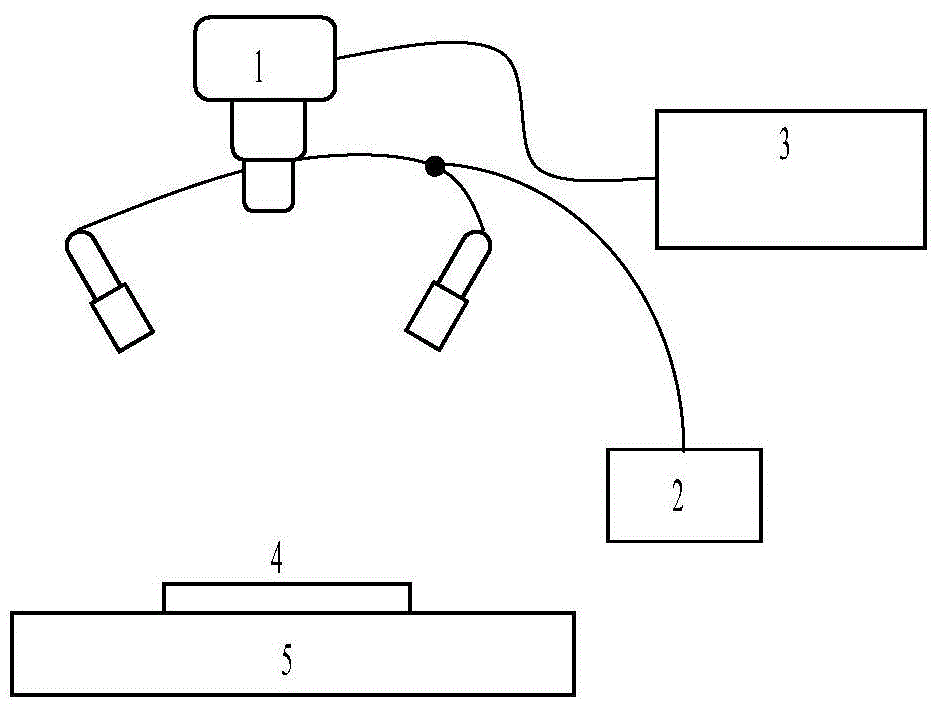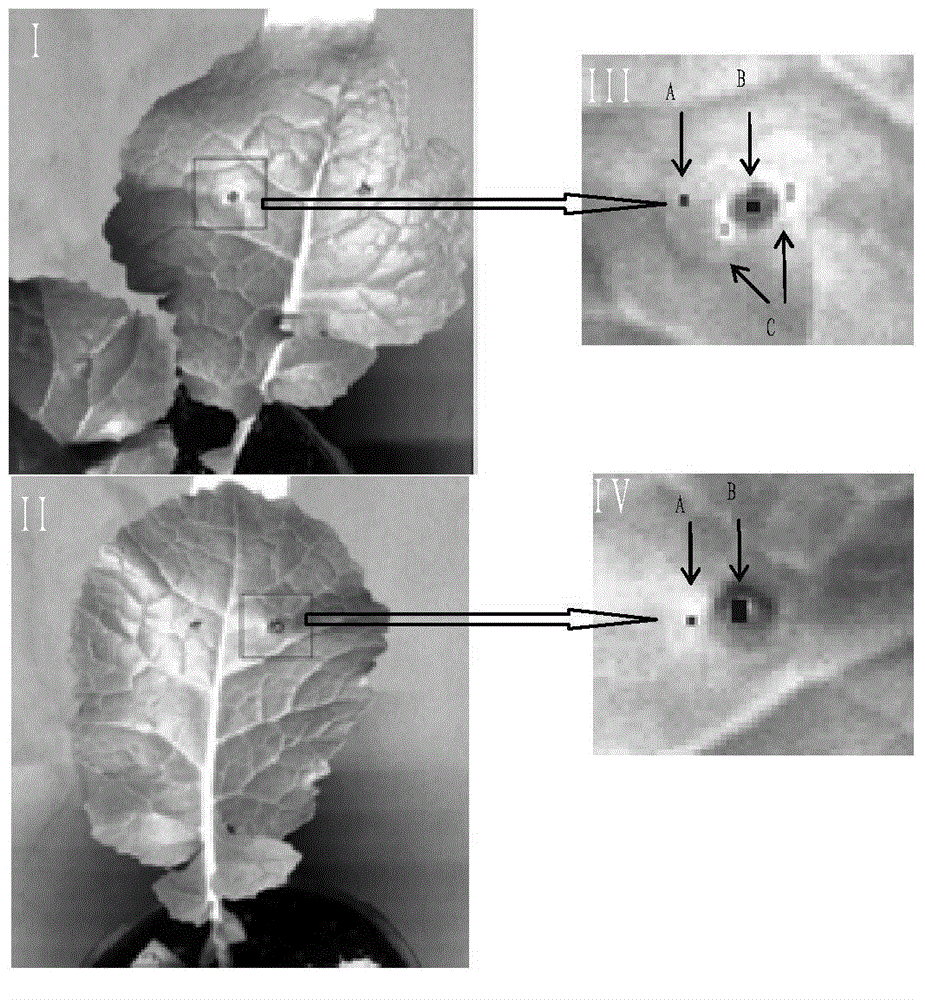Method for identifying early-stage disease spots of sclerotinia sclerotiorum and botrytis of rape
A technology for sclerotinia sclerotiorum and botrytis cinerea of rapeseed, applied in the measurement of color/spectral characteristics, etc., can solve the problems of less research and unsatisfactory accuracy, and achieve the effect of high identification accuracy and accurate classification.
- Summary
- Abstract
- Description
- Claims
- Application Information
AI Technical Summary
Problems solved by technology
Method used
Image
Examples
Embodiment 1
[0070] Embodiment 1 band operation and feature band-least squares support vector machine (LS-SVM)
[0071] By observing the spectral difference between sclerotinia and gray mold (such as Figure 5 ), it was found that there is a big difference in the slope of the spectral curves of Sclerotinia sclerotiorum and Botrytis cinerea in the 675-750nm region, and this difference can be used to distinguish them. At the same time, the maximum value of the spectral difference between sclerotinia and botrytis cinerea appears at 748.23nm, and the minimum value appears at 681.95nm. Therefore, the band ratio calculation and band difference calculation for these two bands can effectively distinguish the two diseases. spot.
[0072] Select these two bands for calculation, the formula is as follows:
[0073] bandratio=R748.23 / R681.95(2)
[0074] difference=R748.23-R681.95(3)
[0075] In the formula, bandratio is the result of image band ratio calculation, difference is the result of image d...
Embodiment 2
[0081] Embodiment 2 Band operation-receiver operating characteristic curve (BandMath-ROC)
[0082] In order to facilitate subsequent image analysis, the result of the region of interest extraction is made into mask data, and the region of interest is set to 1, and other regions are set to 0.
[0083] This embodiment proposes a BandMath-ROC algorithm to identify two kinds of lesions. The band calculation is divided into a band ratio algorithm and a band difference algorithm. Only two bands are required to participate in the calculation, which can greatly reduce the calculation quantity.
[0084] Apply a mask to the band ratio and band difference calculation results for analysis, such as Image 6 shown. This embodiment tries to perform threshold segmentation on the results of band ratio and band difference calculation to distinguish two kinds of lesions. The selection of the threshold is an important step. If the selected threshold is close to the first category, then the proba...
PUM
 Login to View More
Login to View More Abstract
Description
Claims
Application Information
 Login to View More
Login to View More - R&D
- Intellectual Property
- Life Sciences
- Materials
- Tech Scout
- Unparalleled Data Quality
- Higher Quality Content
- 60% Fewer Hallucinations
Browse by: Latest US Patents, China's latest patents, Technical Efficacy Thesaurus, Application Domain, Technology Topic, Popular Technical Reports.
© 2025 PatSnap. All rights reserved.Legal|Privacy policy|Modern Slavery Act Transparency Statement|Sitemap|About US| Contact US: help@patsnap.com



